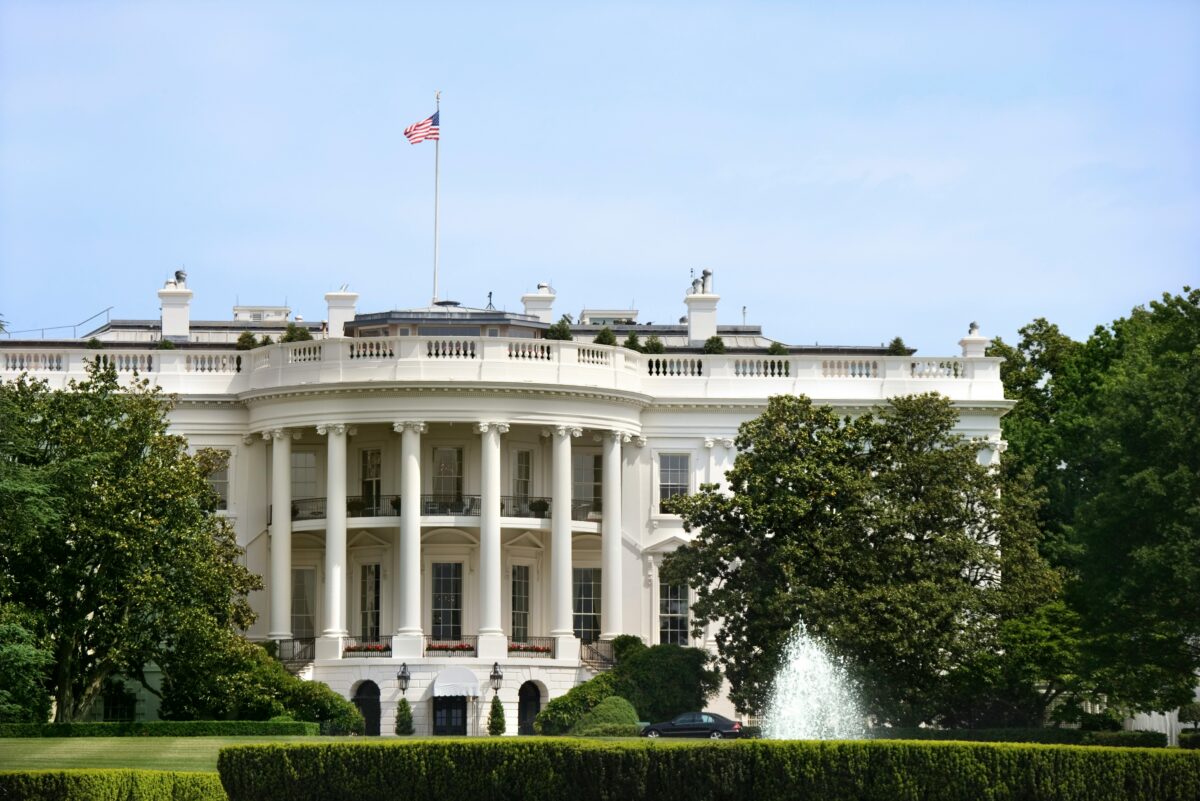With less than five weeks to the November 5 polling date, the US presidential as well as Senate and House majority outcomes remain too close to call. In the following analysis, Franklin Templeton Institute’s Chief Market Strategist, Stephen Dover, explains why he believes that a divided government in Washington, DC, with no single party controlling the White House, Senate and House of Representatives is likely. He discusses the possible effects of the elections on the markets and offers investment conclusions.
We’ve seen this before
In the 2020 US elections, outcomes for the presidency as well as Senate and House majority control were decided by wafer-thin majorities. Although President Joe Biden was elected in 2020 with a comfortable majority in the electoral college (306-232) and in the popular vote (a four-percentage point gap), his margin across key battleground states was much, much tighter. Biden won Arizona by less than 10,500 votes, Georgia by less than 12,000 votes, and Wisconsin by just over 20,000 votes. Without those three states, the election would have ended in a dead heat, with each candidate at 269 electoral college votes, and the outcome would have been determined in the House of Representatives.
In short, Biden won the US presidency by less than 50,000 votes cast out of a total of more than 155 million—for a margin of victory of 0.032%.
Such is the state of the union, or at least the sometimes hard-to-follow constitutional mechanism for choosing presidents via the electoral college.
Today, polls and futures markets indicate a race that, like 2020, is too close to call. Margins for the popular vote in polls of polls reside mostly within statistically insignificant ranges, as do those for the seven key swing states of Arizona, Georgia, Michigan, Nevada, North Carolina, Pennsylvania and Wisconsin. Various spread-betting sites1 show a small but shrinking margin for Harris. The widely followed 538 site,2 composed of polls of polls and probability margins, deems the election “too close to call.”
The races for the Senate and House are not much clearer. According to the Iowa Electronic Markets,3 the odds that the Democrats wrest control of the House of Representatives are currently at 78%. By the same metric, Republicans are gauged to have 68% odds of securing a majority in the US Senate. While those probabilities are higher than similar odds on the US presidential outcome, they also reflect extremely narrow margins of victory, with Congressional majorities decided by perhaps a single seat in the Senate and as few as a half dozen seats in the House.
In short, with just over a month until election day, everything remains up for grabs.
Uncertainty will linger
That implies that uncertainty could linger beyond election day. Recall, that following the 2020 polls it took a full week for independent sources to determine the winner of the presidential election, and until mid-December for the certification process to conclude, following extensive court challenges. The majority of the 2021 Senate was not decided until early January, albeit due to special Senate elections in Georgia.
Legal challenges, some of which have already commenced, add to uncertainty. Re-counts, delays and disputes over certification of results, alongside courtroom litigation are virtually assured if state election outcomes are close. Various legal and procedural challenges are likely to endure until at least December 17, which is the deadline for state certification of the presidential election results and the official nomination of state electors to the Congressional certification on January 6, 2025.
In some states, matters have become even more prone to litigation and political wrangling. Under laws passed since 2020, Georgia requires election officials to make a reasonable inquiry into election outcomes, while in Pennsylvania county recount petitions can be filed by as few as three registered voters. The scope for delay and obfuscation is self-evident.
How investors should play it
As we have said previously, in the long run the makeup of the US federal government—unified or divided government, Democratic or Republican presidencies—makes little-to-no difference to equity or fixed income market returns. Historically, the fundamentals of growth, inflation and corporate profits are key drivers, not the political tilt in Washington.
But each election is different. A close election, with differences fought out in the courts of law and public opinion, harkens memories of not only 2020 but also 2000. Twenty-four years ago, the Supreme Court ruled 5-4 to tip the election to George W. Bush. In that era, one when the Supreme Court enjoyed bi-partisan credibility and legitimacy that it does not today, its ruling was accepted by the loser, former Vice President Al Gore, and his supporters. After January 6, 2020, and given a Supreme Court whose public standing has the lowest US public opinion polling in history, will investors have the same confidence that an election outcome decided in the nation’s highest court will be readily and willingly accepted by the losing side?
Over the past decade, markets have turned a blind eye to the degradation of US political and policy institutions. Thus far, that dismissal has proven correct: Markets have, if anything, delivered returns beyond those expected by the fundamentals since 2015.
But a modern economy requires not just the rule of law, but its broad acceptance. It requires faith that norms will be upheld and that the popular will, expressed through elections, will prevail. If those underpinnings of political stability are tested by a disputed election where the rule of law is not accepted by the loser, we believe the adage that “markets are driven by the fundamentals” will also be tested.
Investment conclusions
Investors and ordinary citizens alike prefer a fairly decided election, letting the democratic chips fall where they may. Should that be the outcome on November 5, 2024, markets should breathe a sigh of relief and begin the process of picking winners and losers, reflecting the policy preferences of those coming into office in 2025.
Should that be the case, our basic investment conclusions remain unchanged. They are as follows:
A divided government is often welcomed by investors because it mostly diminishes uncertainty. The scope for sweeping legislative changes to tax laws or regulatory policy is constrained by the need for compromise. The status quo tends to persist, allowing firms and investors to make decisions without having to consider major fiscal or regulatory policy shifts.
A divided government can permit deficit reduction, as occurred from 1994-2000 and again from 2010-2016. Bond investors, therefore, may have grounds for welcoming political competition in Washington as a mechanism to reduce deficit and debt burdens.
A divided government could increase political default risk. Government shutdowns and the potential for the Treasury to miss interest payments on the national debt have been a concern when impasses led to a political inability to raise the US debt ceiling.
The primary driver of returns in US Treasuries and the overall direction of interest rates will be determined by the business cycle (growth and inflation) and corresponding Federal Reserve policy. Barring political brinksmanship, the US federal government deficit and debt burden should remain of secondary importance to bond investors.
For equities, valuations and profits determine returns. Raising the corporate income tax rate (Harris favors raising it from 21% to 28%) would lower after-tax corporate profits. Conversely, Trump would strive to lower the corporate tax rate (from 21% to 15%), boosting after-tax corporate profits. However, any President will struggle to make changes in a divided Congress, suggesting to us that less extreme outcomes are probable.
In our view, the more important consideration for equity investors is regulatory action, which resides chiefly with the president. Harris and the Democrats are apt to push for greater regulation of fossil fuel energy and the pharmaceutical industry (e.g., further caps on prescription drug pricing), while promoting alternative energy. The opposite would likely be true in a Trump presidency.
The US dollar could be vulnerable in a Trump victory, if the result is the imposition of large, across-the-board tariffs. If countered by other countries, the risk of trade wars could push up risk premiums. Likely a negative for the stock market as a whole (but good for specific companies) and could cause a market move into what investors perceive as safe-haven assets.
Anti-trust policy is worth watching. Both parties and their presidential candidates have expressed reservations about the dominance of concentrated business power. Anti-trust is already being wielded against tech titans, and both administrations could take matters further.
1. Source: “Who will win the 2024 US presidential election?” PredictIt. Accessed October 2, 2024. There is no assurance that any estimate, forecast or projection will be realized.
2. Source: “Who is Favored to Win The 2024 Presidential Election?” 538. October 2, 2024. There is no assurance that any estimate, forecast or projection will be realized.
3. Source: “Market Information: Senate24.” Iowa Electronic Markets. There is no assurance that any estimate, forecast or projection will be realized.







